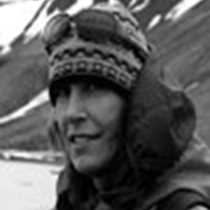Rio Ucayali: Rio Dorado & Atun Poza
Rio Dorado is such a beautiful place, that we decided to all explore it together this morning: no early morning, pre-breakfast foray. In we went, departing the Delfin II at 6:30 after a brief confusion over the proper timing of the wake-up knock. Our efforts did not go unrewarded. Deep in the flooded areas of the Rio Dorado, we found two rufescent tiger herons perched on a large branch above the water and, nearby, yellow-rumped caciques busy on their condo-style nests. There, we cut the engine and listened.
It’s amazing to reflect upon what you can hear when your own busy-ness slows and stills. Although our guides might have had a name for each chirp and rustle, there was a real pleasure in allowing the experience to wash over us to, picking out the chuff of a hoatzin here, the squawk of parakeets there, and everywhere the honking bray of horned screamers.
Back aboard, we recapped our route and sightings by going over the map and wildlife list, taking this as an opportunity to both tally what we’ve seen and also learn a bit more about a few creatures: today, it was river dolphins. To match our natural history immersion with cultural immersion, Adonai taught us how to make juanes, a traditional river to-go meal of rice and chicken wrapped in leaves. Delicious, we found out when they arrived on our tables at lunch.
We pushed our afternoon excursion back a half-hour, heading into the Atun Poza area by skiff. Atun Poza has both an oxbow lake and meandering creeks that allow us a variety of explorations. People from the same-named community came out by canoe to meet us and tempt us with handicrafts sewn in the form of local creatures or made from local plants.
A green iguana or two stopped us; the rough spikes of crest looking amazingly similar to the leaves it was perched in. Deeper and deeper up the creeks we went, finding open lakes, floating water hyacinth, and sloths galore. Squirrel and brown capuchin monkeys were very much paired today; we couldn’t see one without seeing the other nearby. Not that we minded.
Then the sun set. The world quieted. We listened to a distant spectacled owl give its rattling call, a sound of ill-omen if heard near your house because locals believe that it resembles the sound of nails being pounded in a coffin. It was eerie. Our guides pulled out spotlights, we donned protective goggles, and we searched for eye-shine, finding a few caimans nestled in the grasses this way.
Even this brief half-hour after dark gave us a window into how the Amazon is not just one river, but many, with different creatures and activities inhabiting it at different times of the day as well as in different seasons.




